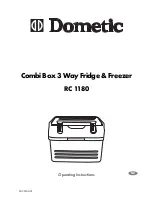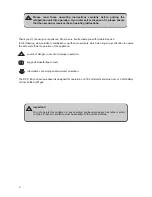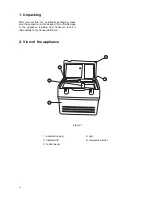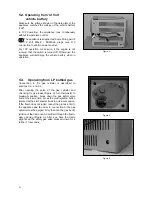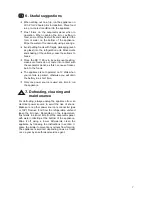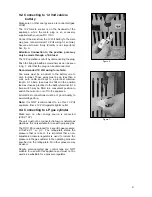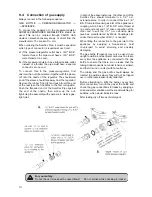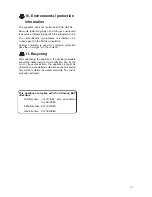
7
6. Useful suggestions
When setting out on a trip, run the appliance on
230 V for 24 hours prior to departure. Place food
in a pre-cooled condition into the appliance.
Frost forms on the evaporator panel when in
operation. When opening the lid or putting in
food, some of this frost melts and collects in the
form of water on the bottom of the appliance.
Wipe the water off occasionally using a sponge.
Avoid putting foods with fragile packaging (such
as glass) into the refrigeration unit. Movements
and shaking of the unit may cause these items to
break.
Once the RC 1180 is in its permanent position,
make sure foods do not come into contact with
the evaporator panel, as this can cause freezer-
burn to the foods.
The appliance is not operated on 12 Volts when
your vehicle is parked, otherwise you will drain
the battery in a short time.
Only one power source is used at a time to run
the appliance.
7. Defrosting, cleaning and
maintenance
For defrosting, always unplug the appliance from an
electrical power source to avoid the risk of shock.
Make sure no other power source is connected (gas
or 12V). Remove food from the refrigeration unit and
leave the lid open. Depending on the temperature,
frost melts in a short time from the evaporator panel,
with water collecting at the bottom of the appliance.
Wipe it off using a towel. Afterwards, clean the
appliance by following the instructions in section 3.
Leave the lid ajar to prevent any odours from forming.
The appliance is serviced depending on use, at least
once a year by an authorised service agent.

